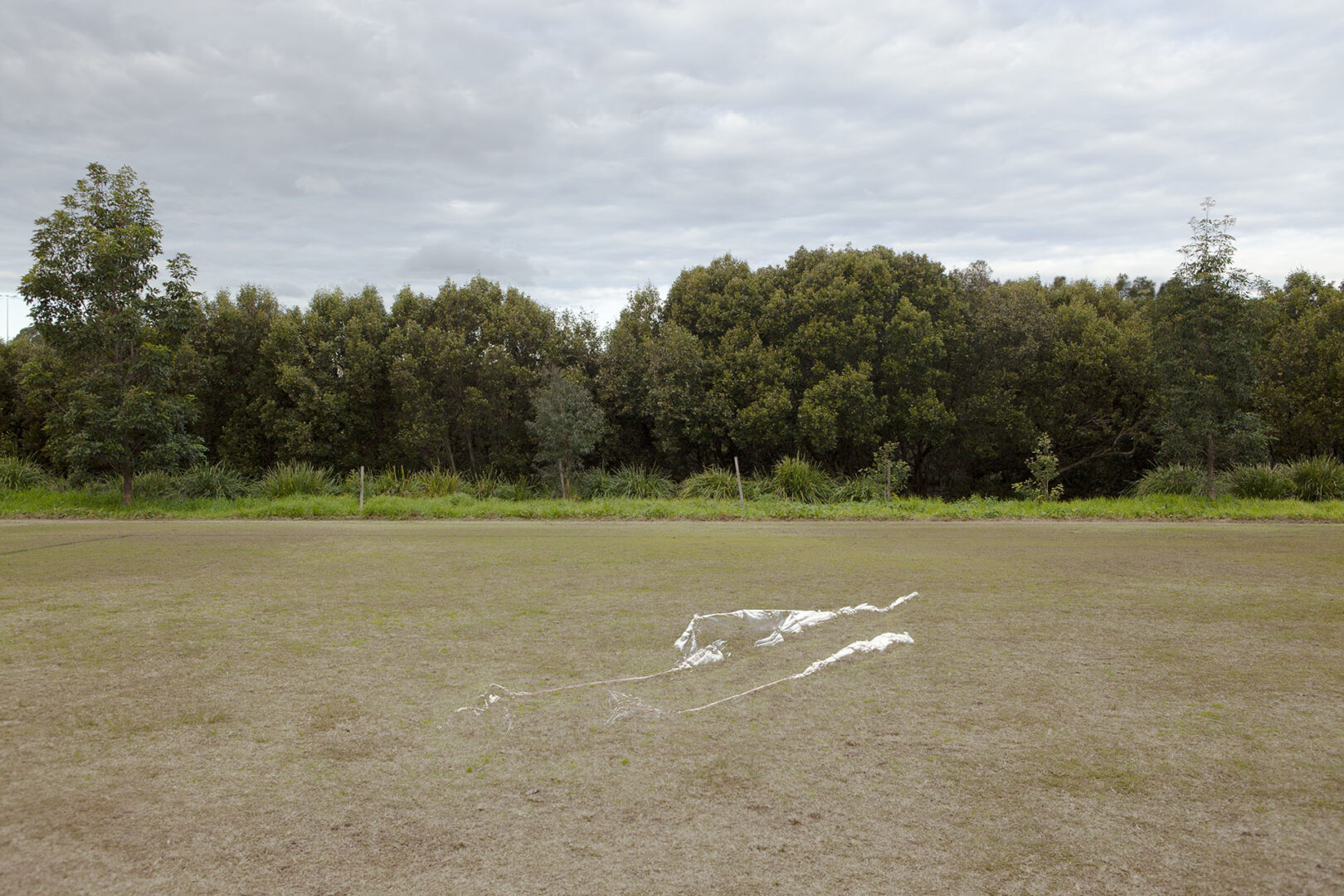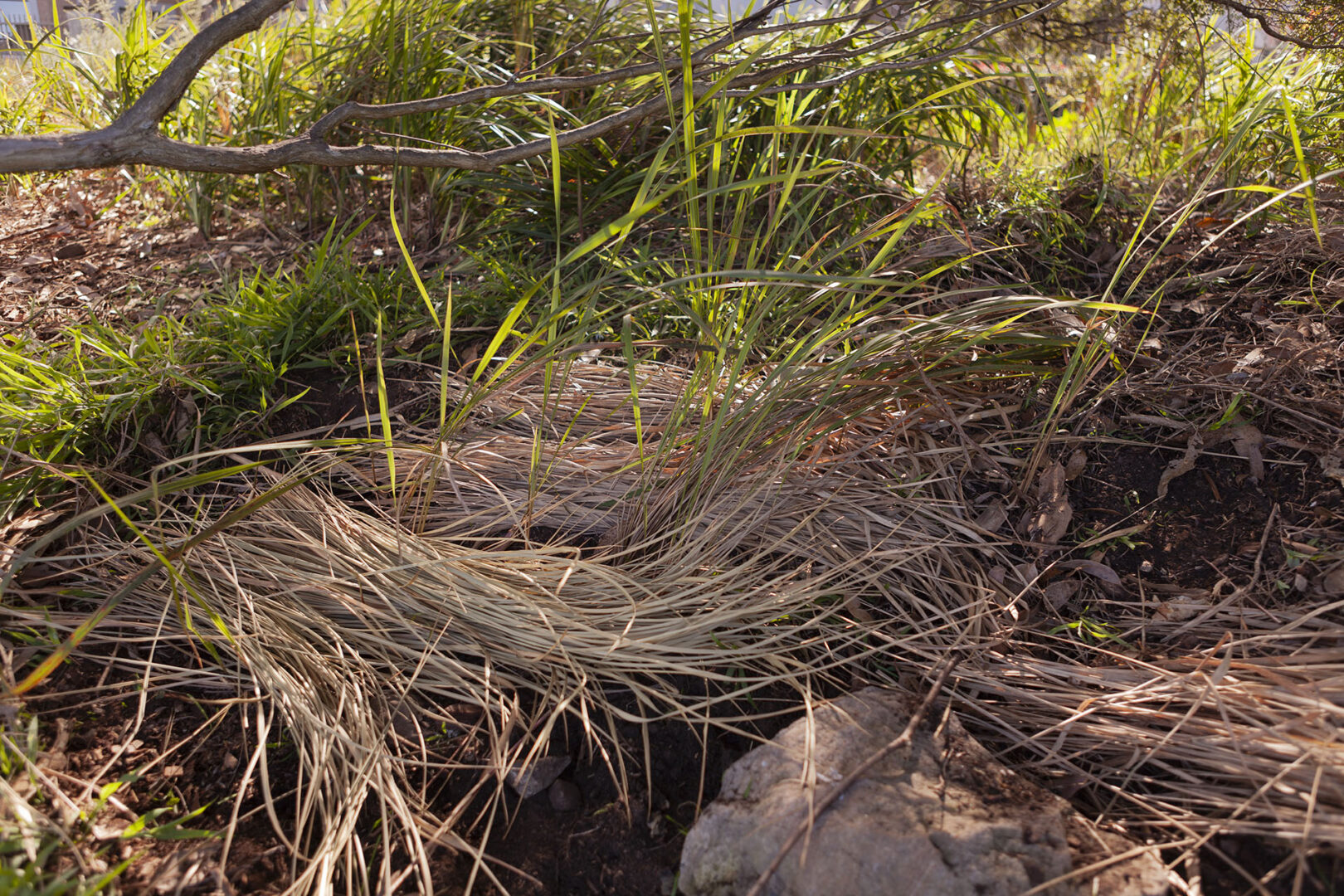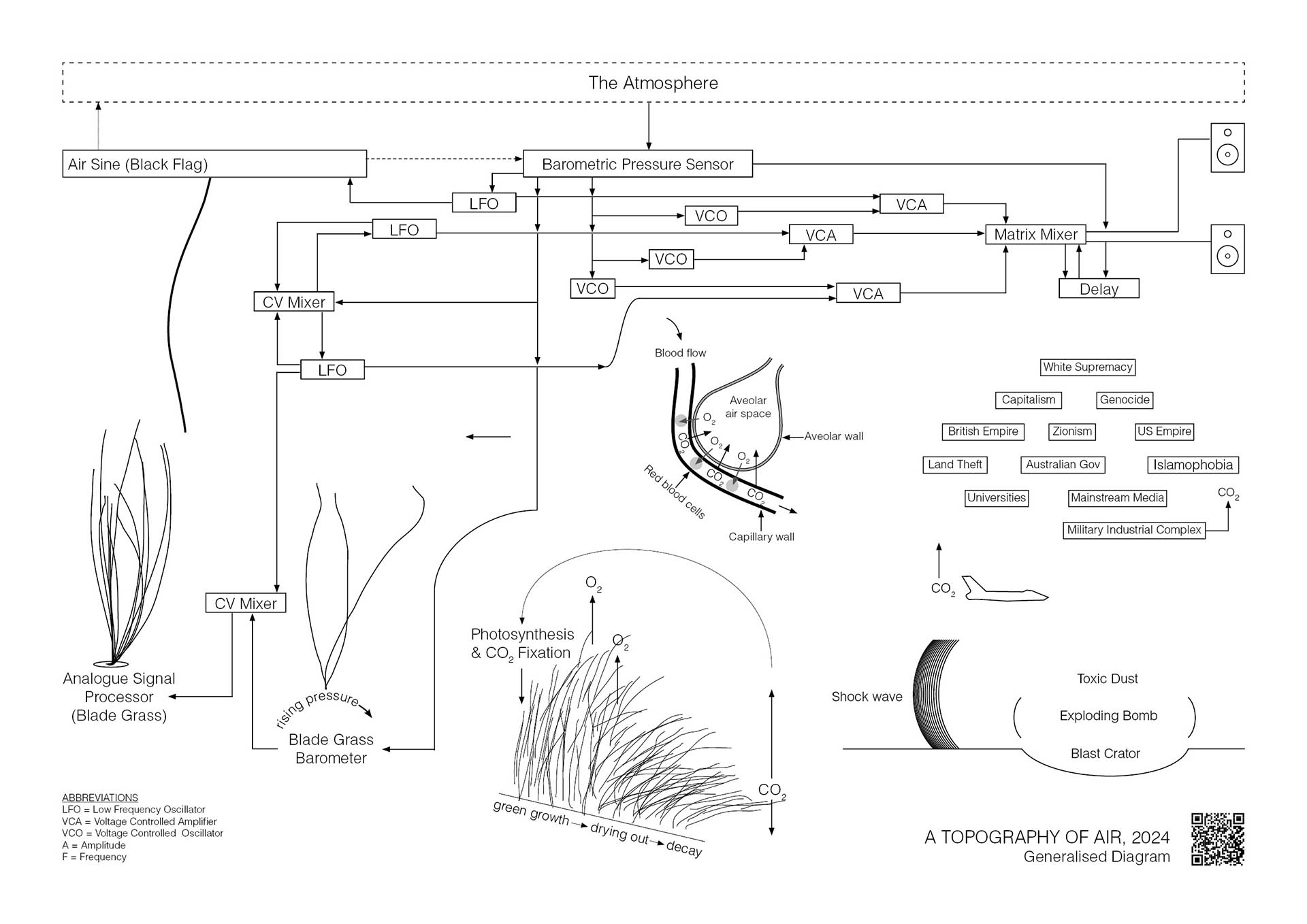Pressure gradients form an ever-shifting topography of air, a topography patterned by the earth’s rotation on its axis and the Sun’s cyclic heating of air, land, and ocean.
The pressure waves that are the consequence of the spinning earth and it’s proximity to the Sun are a tidal phenomenon with a 12 hour cycle. When the ‘noise’ of the weather is removed from the signal of cyclic heating, plotting the daily pressure fluctuations reveals a sine wave, with a maximum amplitude in the tropics, where more of the Sun’s energy reaches the surface of our planet.

Topographic Mapping
The isobars on a weather map link areas of equal air pressure in a way that is analogous to contour lines linking areas of equal altitude on a topographic map. The closer the isobars, the steeper pressure gradient, the stronger the wind.
The map offers generalisations that serve the purpose of prognostication, navigation, and planning. The topographic map describes features that you can see, both on the map and in the terrain.
The isobars on weather maps describe an aerial topography without fixed reference points. We see the visual form on the map, we feel pressure gradients on our skin. We swim in this topography of air, our bodies sensing its pressure changes; from shock waves, to cyclones and hurricanes, to gale-force winds, from a fresh to a light breeze, to a zephyr caressing the back of your neck, from air moving with intricate subtlety at the finest edge of your ability to perceive its motion, to ineffable energies transmitted through aerial matter.
*
We sense, we respond.
*
This topography of air is embedded in the artistic, biological, cultural, and technological networks that traverse the earth, oceans, and atmosphere. It was created on unceded Gadigal, Gamygal, and Wangal lands. Always was, always will be.
Condensation Cube
Hans Haacke’s Condensation Cube (1963 – 1967) is a plexiglass container partially filled with water. Patterns of evaporation and condensation line the walls of the cube. These patterns are influenced by the air in the gallery, its heating, cooling, and dehumidifation systems, and by the heat and humid breath of the bodies viewing the work.*
Discussions of Haacke’s practice sometimes articulate a divide between his earlier works that deal with ‘natural systems’, like Condensation Cube, and his later works that take social systems as their subject. This division might cause us to overlook the social and political dimensions of works like Condensation Cube.
Listening to the air
The sun is setting on a calm afternoon in December 2023. A car speeds along Sydenham Road. The pressure waves that trail it are analogous to the wake of a boat. Inside Sydenham International, only meters from the street, I listen to air pressure fluctuations through a modular synthesizer. I hear the pressure waves produced by the car. Both speeding car, and speeding boat, have the power to disrupt and destroy the intricate, subtle patterns that occur in air and water.
A plane flies low over Sydenham on its approach to Sydney Airport. I hear its wake disrupt the topography of pressure gradients above me. CO2 emissions from its engines alter the chemical composition of the atmosphere. Cyclones, hurricanes, floods, and drought all become more likely.
A person on a bicycle passes during a lull in the traffic. Somewhere near the edge of perceptibility, the ripples of their wake tickle the air pressure sensor, slightly modulating the sound I am hearing.
Shock waves
As I listen in Sydenham, Israel bombs Gaza.
The shock wave from a bomb expands its deadly impact far beyond the fireball that incinerates its victims.
Like an ordinary wave, a shock wave carries energy and can propagate through a medium but is characterized by an abrupt, nearly discontinuous, change in pressure, temperature, and density.
Our lungs are the organ most susceptible to the force of a shock wave. Bombs turn the life-giving air in our lungs into a medium of death. In a shock wave, air pressure gradients become a cliff that smashes into you. The discontinuous change in pressure, temperature, and density cause “alveolar wall and capillary rupture”. The shock wave asphyxiates as lungs are destroyed by its impact. Shock waves break the life-giving fabric of air and bodies.
A detonating bomb incinerates and pulverizes. To pulverize is “to reduce to powder or dust”. Previously inert materials become toxic in the heat of the explosion. Already carcinogenic materials are pulverized. Toxic dust is sent into the air and lungs of anyone in the vicinity.
An estimated 70 000 tons of bombs were dropped on Gaza between October 2023 and April 2024. Every exploding bomb a crime against humanity, against life, against the sanctity of the air. The military industrial complex produces these horrors with complete impunity. Weapon manufacturers’ stock prices have surged. Huge profits have been made from the destruction of Palestinian lives. Capitalism creates a financial incentive for genocide. Universities refuse to divest from the weapon manufacturers that produce these horrors.
Listen to Dr Hanan Ashrawi, to understand something of what life is like for Palestinians living in occupied Palestine.
The antithesis of art
Such destruction and necro-political profiteering are the antithesis of the art that I practice. Through this art I cultivate an appreciation of the fragile beauty of the air. To see that beauty destroyed, the air made toxic and weaponised against fellow human beings is against everything I practice and my deepest sense of morality.
Listen to Prof. Rudolph Ware, for religious and moral clarity, and to better understand the patterns of settler-colonial white supremacy.
Institutional Critique
In 1971 Hans Haacke’s exhibition at the Guggenheim Museum was cancelled after he proposed the work Shapolsky et al. Manhattan Real Estate Holdings, A Real Time Social System, as of May 1, 1971. Haacke used public records to investigate the property holdings of the Shapolsky family uncovering “shell corporations that Shapolsky and his relatives had created to control properties around the city”.
Harry Shapolsky had previously been convicted of rent gouging. Shapolsky’s exploitative practices were one of the reasons “New York State passed a bill to include slumlords’ identities in the public record”. These laws allowed Haacke to make his work. The work consists of photographs of each building, and the financial and geographical information related to them that Haacke brought to light from the public record.
The cancellation of Haacke’s exhibition led to his 1974 work Solomon R. Guggenheim Museum Board of Trustees in which he listed “the names, birth dates, and occupations of the museum’s board of trustees.” Taken together Shapolsky et al. and Solomon R. Guggenheim Museum Board of Trustees are exemplary in the practice of institutional critique.
*
The University of Sydney main campus is built on land stolen by the British Empire from the Gadigal people of the Eora nation. There has been no justice for the crimes committed during the invasion of these lands. No justice for the genocide perpetrated against the Gadigal people and the first nations of this continent.
Our current government continues the process of covering up the crimes of our settler colony in a way that aligns with the settler colonial crimes and cover ups currently occurring in occupied Palestine. If you are a settler coloniser like me, and you do not understand the need for truth and justice for the crimes committed against this continent’s first nations people and their land, then you are part of the cover up.
The University of Sydney is complicit in the theft of Palestinian land through its ongoing relationships with weapon manufacturers supplying the Israeli military. USyd also has partnerships with Israeli universities with deep ties to the military and openly discriminatory practices towards Palestinian academics and students.
Listen to Maya Wind to understand the deep involvement of Israeli universities with the military industrial complex and the settler-colonial apartheid state.
Colonial violence is perpetrated by the state institutions of the police and military, and paramilitary settler colonisers. Colonisation also works through the practices of cultural institutions including museums, galleries, universities, and astronomy departments.
Listen to Dr Fatima on universities as colonial institutions, and the Israeli apartheid state.
The inertia of colonial institutional practice requires conscious transformative efforts to overcome. Transformative efforts like the campaign for universities to boycott and divest from their ties to Israeli institutions, and weapon manufacturers facilitating the settler colonial violence of the Israeli state.
Read the demands for disclosure, boycott and divestment by the SRC at Usyd and how the university has responded.
The Wrapped Trees Project
Christo’s work Two Wrapped Trees (1969) is now part of the permanent collection of the Art Gallery of New South Wales (AGNSW). When Christo wrapped the trees he did so without questioning whether it was OK for him to sacrifice and subsume the lives of the two saplings into his art. This lack of thought and care for the lives of the trees can be seen as a continuation of patterns of colonial destruction and domination.
The Wrapped Trees were a gift from Christo to John Kaldor after he provided the textile used by Christo and Jeanne-Claude in their work Wrapped Coast, One Million Square Feet, Little Bay, Sydney, Australia, (1968–69). The trees were subsequently donated by John Kaldor to the AGNSW.
Christo and Jeanne-Claude’s Wrapped Coast can now be seen in the context of other historic and contemporary land art projects that have reproduced colonial practices in their disregard for indigenous ownership and forms of relation to the land.

The goal of the Wrapped Trees Project, initiated by Yugambeh-Bundjalung and Kannakan artist Juundaal Strang-Yettica, is to have the trees wrapped by Christo de-accessioned from the Art Gallery of NSW collection so that they can be returned to country, and return to the cycles of the earth, air and water, from which they came.
The project is an example of a conscious transformative effort directed towards an institution whose inertia reproduces colonial forms. The Wrapped Trees Project is a reminder that colonisation is an ongoing process that is reproduced in our cultural and governmental institutions. It also reminds us of the artist’s role in questioning institutional power.
Of the air
When I listen to the air in my studio I open and close the door slowly. The relatively small volume of air in the room means that the pressure wave created by the door moving at normal speed is clearly audible. Disturbing the air in this way disrupts my appreciation of subtle pressure gradients.
*

Imperata cylindrica (native blade grass) turns sunlight into energy through oxygenic photosynthesis. This metabolic process was invented by cyanobacteria whose cells were incorporated into plants and algae in a series of symbiotic events. Together, plants, algae, and bacteria produce the oxygen that constitutes around 21% of the atmosphere. This oxygen drives our metabolism and that of all aerobic organisms.
Nitrogen makes up 78% of the atmosphere. Bacteria are the only organisms capable of plucking it out of the air. Nitrogen is essential to many cellular processes. DNA cannot be made without it. Without nitrogen-fixing bacteria multicellular life would not exist.
The remaining 1-2% of the atmosphere is made up of argon, and trace gasses including carbon dioxide, methane, nitrous oxide, and ozone.
Biological carbon fixation is driven by photosynthesis. It is the process by which plants, algae and bacteria “convert the carbon found in inorganic molecules in the atmosphere into organic matter to produce biological building blocks and fuel for cellular respiration.”
The carbon and nitrogen in our bodies comes from the air via cellular processes invented by bacteria. When we die much of this matter returns to the air to be cycled again through bacteria, algae, plants, animals and fungi.
*
The topography of the air in any location is connected through heat, carbon, water, and nutrient cycles to the circulatory dynamics of global systems. Smoke from the 2019-2020 Australian Bushfires reached the lower stratosphere, rising to 35km in altitude and encircling the earth. Carbon emitted by the Israeli war machine and US military does not stay within national boundaries.
If William Turner painted early industrial England and failed to include the coal smoke that he could so clearly see, he would be a lesser artist. Working with the atmosphere as a subject in contemporary art compels us to consider the necro-political dynamics that weaponise the air and drive us toward climate apocalypse.
Art and resistance
Art has long been a form of resistance. Jazz, blues, soul, and hip hop are more than musical genres. They are exemplary art forms that speak to the liberatory power of finding the means to express your deepest moral outrage through a creative act. This channeling of outrage has produced some of our most powerful art and music.
Listen to all six of Cornel West’s Gifford Lectures to understand the power of musical resistance.
When Pablo Picasso painted Guernica in 1937 he was responding with indignation to the bombing of a civilian population by the fascist alliance between Italy and Nazi Germany that helped bring the Spanish dictator Francisco Franco to power. He was also responding to a call by the poet Juan Larrea to make the bombing the subject of his work.
Seeing Picasso’s work in the context of a succession of horrors that followed, as air forces bombed civilian populations in London, Dresden, Hiroshima, Nagasaki, Vietnam, Iraq, Afghanistan, and now Gaza, may lead some to question how effective art can be in bringing an end to such horrors.
To ask such a question would be to miss the point of the liberatory power of finding the means to express your deepest moral outrage through a creative act. It would miss the point that the fragile beauty and power of our work stands in stark contrast to the ugly brutality of fascist destruction.
It would be an abdication of our connection to the history of anti-war art, of institutional critique, of musical resistance, if we say nothing in our work of the horrors currently occurring in Gaza and occupied Palestine.
Those who argue that art should not be political diminish our humanity, misconstrue the role of the artist, and devalue art. Art is worth little if it can’t be a form of resistance against ongoing colonial violence in Australia, and the colonial atrocities perpetrated by Israel in Gaza and the rest of occupied Palestine.
To my fellow settler colonisers
Your property investments are one of the ways that you benefit materially from settler colonial land theft and conquest. As the value of your properties increases, do you become the less likely to speak against the theft of Palestinian lands and the crimes of the Israeli military? Do you find yourself less likely to consider how you can redress the theft of the land that you now own in this settler colonial nation?
Donate, pay the rent
I have donated my artist fee from the exhibition ‘Topographies’ at SCA Gallery to UNRWA. You can donate here.
Please also pay the rent for land stolen in this settler colonial nation.
*Here I draw on Janine Randerson’s excellent discussion of Hans Haacke’s Condensation Cube in her book Weather as Medium: Toward a Meteorological Art (2018).
